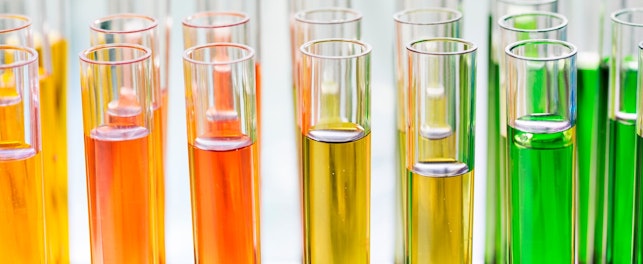The EU has published Regulation (EU) 2020/1245 to revise Regulation (EU) 10/2011 on food contact plastics. The new law will enter into force on September 23, 2020
On September 3, 2020, the European Union (EU) published Regulation (EU) 2020/1245 to amend and correct Regulation (EU) 10/2011 on plastic materials and articles intended to come into contact with food (‘Food Contact Plastics Regulation’, consolidated version to August 2019 for reference). This comprehensive legislation contains, inter alia, important changes to Annexes I, II, IV and V to the Food Contact Plastics Regulation.
The new law will enter into force on September 23, 2020 – the twentieth day after its publication in the Official Journal of the EU (OJEU).
According to the latest legislation, food contact plastics complying with the Food Contact Plastics Regulation before September 23, 2020, and which were placed on the market before March 23, 2021, may continue to be placed on the market until September 23, 2022 and remain on the market until stocks are exhausted.
Highlights of the new law are summarized in Table 1.
| Regulation (EU) 2020/1245 amending and Correcting Regulation (EU) 10/2011 | ||
|---|---|---|
| Entry | Section | Highlight |
| 1 | Annex I, Table 1 ‘Union list of authorized substances’ |
|
| 2 | Annex II ‘Restrictions on plastic materials and articles’ | Completely replaces Annex II:
|
| 3 | Annex IV ‘Declaration of Compliance’ | Replaces point 6 to include information on the quantity of substances in intermediate materials |
| 4 | Annex V ‘Compliance Testing’ | Amends point 2.1.3 to Chapter 2 ‘Conditions of contact when using food simulants’
|
Replaces point 2.1.6 to Chapter 2 ‘Repeated Use Articles’
| ||
| ||
Table 1
| Regulation (EU) 2020/1245 amending and Correcting Regulation (EU) 10/2011 Table 1 to Annex II o ‘General list of migration limits for substances migrating from plastic materials and articles’ | ||||||
|---|---|---|---|---|---|---|
| Entry | Name | SML (mg/kg) | Entry | Name | SML (mg/kg) | |
| 1 | Aluminum1 | 1 | 13 | Iron1 | 48 | |
| 2 | Ammonium1,3 | -- | 14 | Lanthanum1,6 | 0.05 | |
| 3 | Antimony2,4 | 0.04 | 15 | Lead2 | ND (Detection Limit = 0.01) | |
| 4 | Arsenic2 | Not Detected (ND) (Detection Limit = 0.01) | 16 | Lithium1 | 0.6 | |
| 5 | Barium1 | 1 | 17 | Magnesium1,3 | -- | |
| 6 | Cadmium2 | ND (Detection Limit = 0.002) | 18 | Manganese1 | 0.6 | |
| 7 | Calcium1,3 | -- | 19 | Mercury2 | ND (Detection Limit = 0.01) | |
| 8 | Chromium2,5 | ND (Detection Limit = 0.01) | 20 | Nickel2 | 0.02 | |
| 9 | Cobalt1 | 0.05 | 21 | Potassium1,3 | -- | |
| 10 | Copper1 | 5 | 22 | Sodium1,3 | -- | |
| 11 | Europium1,6 | 0.05 | 23 | Terbium1,6 | 0.05 | |
| 12 | Gadolinium1,6 | 0.05 | 24 | Zinc1 | 5 | |
| 1Salts allowed 2Salts not allowed 3Migration is subject to Articles 11(3) and 12 4SML might be exceeded at very high temperature (as note for antimony trioxide, FCM No 398) 5Less stringent limit of 3.6 mg/kg applies if pre-existing documentation demonstrates Cr (VI) is excluded 6Lanthanide substances can be used according to Article 6(3)(a) subject to SML is no more than 0.05 mg/kg for the sum of all lanthanide substances and the analytical evidence using a procedure demonstrating the lanthanide substance(s) used are present in dissociated ionic form in food or food simulant forms part of the documentation in Article 16 | ||||||
Table 2
SGS is committed to providing information about development in regulations for consumer products as complimentary services. Through a global network of laboratories, SGS provides a wide range of services including physical/mechanical testing, analytical testing and consultancy work for technical and non-technical parameters applicable to a comprehensive range of consumer products. Please do not hesitate to contact us for further information.
For enquiries, please contact:
Hingwo Tsang
Global Information and Innovation Manager
t: (+852) 2774 7420
© SGS Group Management SA - 2020 - All rights reserved - SGS is a registered trademark of SGS Group Management SA. This is a publication of SGS, except for 3rd parties’ contents submitted or licensed for use by SGS. SGS neither endorses nor disapproves said 3rd parties contents. This publication is intended to provide technical information and shall not be considered an exhaustive treatment of any subject treated. It is strictly educational and does not replace any legal requirements or applicable regulations. It is not intended to constitute consulting or professional advice. The information contained herein is provided “as is” and SGS does not warrant that it will be error-free or will meet any particular criteria of performance or quality. Do not quote or refer any information herein without SGS’s prior written consent.



